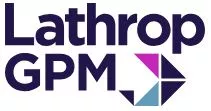The United States Patent and Trademark Office (USPTO) announced on November 18, 2024, that trademark fees will be raised beginning on January 18, 2025 to offset forecasted increases in operating costs.
The USPTO's final ruling sets or adjusts 28 trademark fees while introducing seven new fees. Described below are fees most commonly encountered during trademark filing and prosecution.
Trademark Fee Changes
Trademark Applications
Notably, the USPTO replaced the current three-option system (TEAS-Standard application, TEAS-Plus application, and Madrid application) with a two-option system consisting of:
- National applications having a base application fee of $350
(per class) plus potentially three surcharge fees (per class) of:
- Insufficient information in an application ($100),
- Use of free-form identification of goods/services ($200), and
- Each additional group of 1,000 characters after the first 1,000 characters ($200).
- Madrid applications having a base application fee of $600 per class (an increase from $100). Madrid applications are not subject to the surcharge fees.
The USPTO has justified the fee changes and new surcharges for National applications as encouraging more complete and timely filings of National applications using TEAS Plus rules. In other words, National trademark applications are now subject to TEAS Plus rules or will incur one or more of the surcharges noted above. Regarding Madrid applications, the USPTO has justified the increase fees in lieu of the surcharge fee structure.
Other Trademark Fees
Other notable changes include an increase in fees for filing Statements of Use (SOU) and Amendments to Allege Use (AAU) from $100 each to $150 each. The USPTO has justified the fee change based on increased processing costs and examination time.
Further, the USPTO has increased post registration maintenance fees for a Registration as follows:
- Section 9 registration renewal increased from $300 to $350.
- Declaration of use under Sections 8 or 71 (per class) increased from $225 to $325.
- Affidavit of incontestability under Section 15 (per class) increased from $200 to $250.
The USPTO has justified the increased fees due to increased costs of processing maintenance filings such as post-registration audits and increased legal review to address potential fraud.
What This Means for You
Clients planning filings should consider the practicality of filing trademark applications, statements of use and registration maintenance submissions prior to January 18, 2025 to avoid the fee increases.
For National applications filed after January 18, 2025, surcharge fees can be avoided through careful preparation. For example, to avoid the insufficient information fee, all required statements can be included even if some of the statements are not applicable, as they can be deleted later. In another example, goods and services descriptions can be listed via the ID Manual function to avoid incurring the free-form identification surcharge. Lastly, the number of characters in the identification language should be carefully checked to avoid the excess characters (>1000) fee.
Therefore, now is as important as ever for in-house counsel and clients to work closely with trademark practitioners to clearly outline their goals for each trademark application and strategy in order to mitigate costs.
The content of this article is intended to provide a general guide to the subject matter. Specialist advice should be sought about your specific circumstances.


